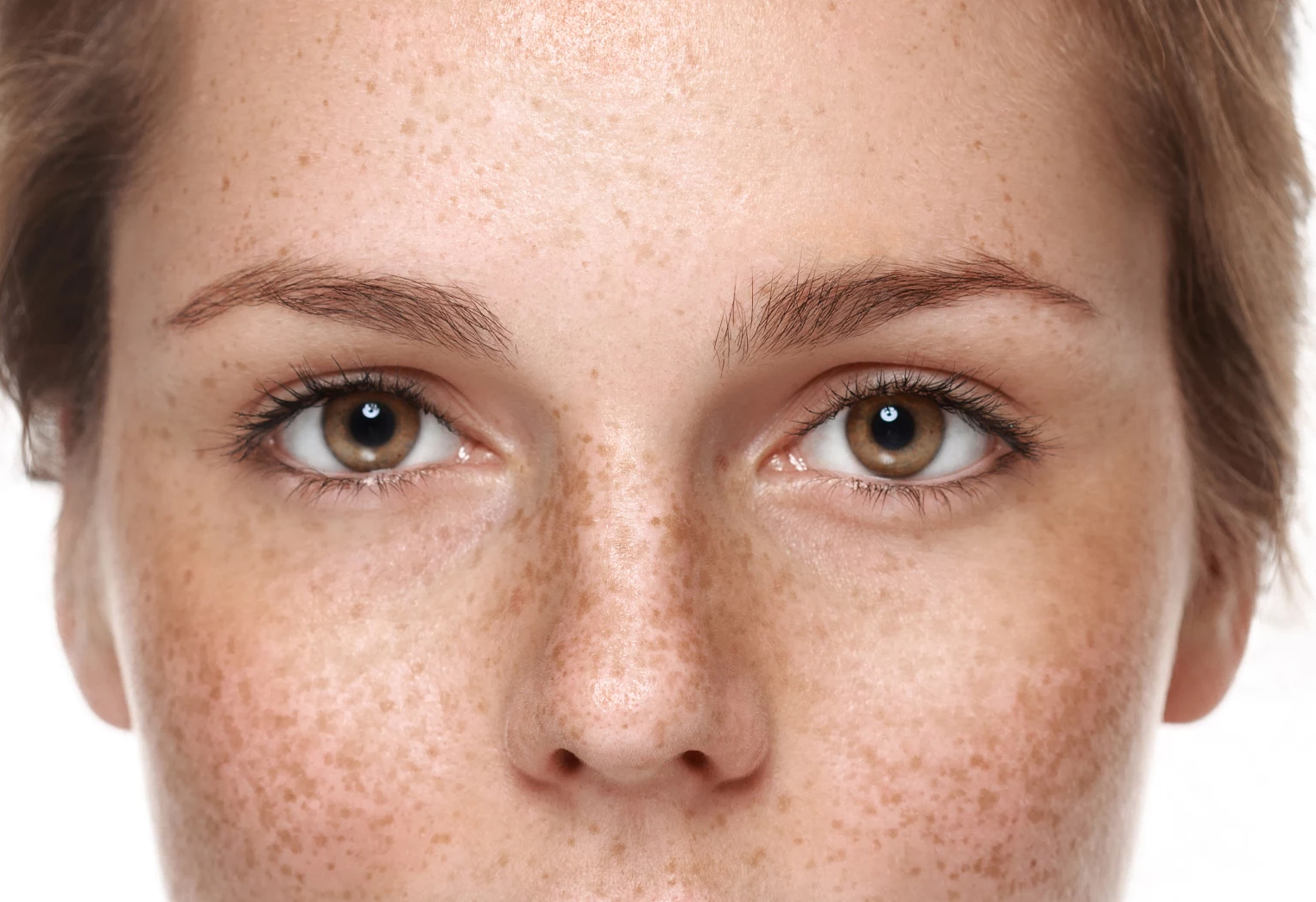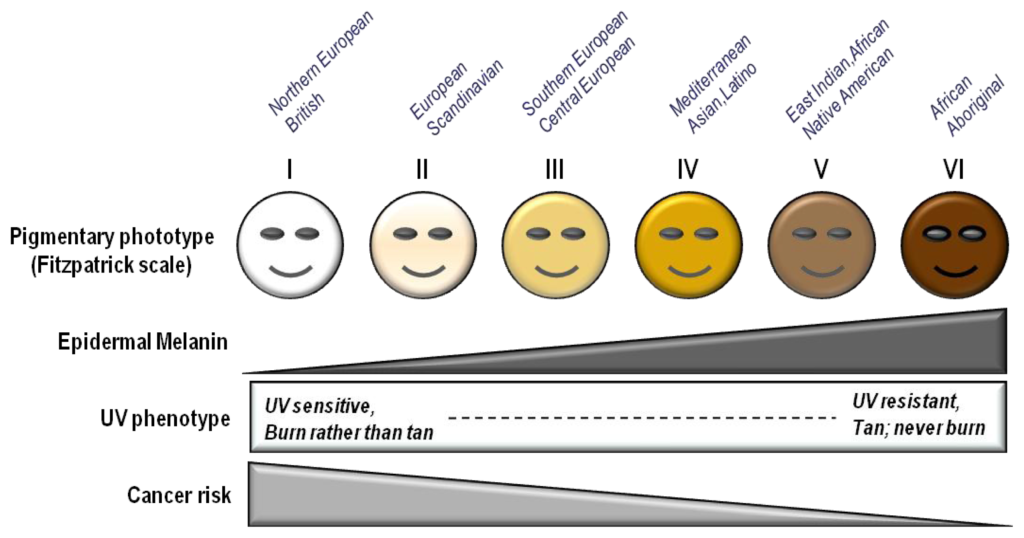In this blog post, I would like to discuss some of the most common concerns our patients have about brown spots or sun damage, along with my top five treatment tips:
Freckles
While often considered cute, especially on the faces of adorable children, freckles can appear on the faces and bodies of a wide array of patients, from very young children to young adults. Most often associated with individuals who have fair complexions, freckles or lentigos are actually a sign of sun damage.
The two main factors that influence skin type are genetics and reaction to sun exposure/tanning habits. The medical method for analyzing skin types uses a scale called the Fitzpatrick Skin Type Classification System.
Photo: wikipedia
Fitzpatrick skin phototypes were developed by Harvard Medical School dermatologist Thomas B. Fitzpatrick, MD, PhD in 1975. This system is classifies complexions based on a person’s skin color and responses to sun exposure in terms of degree of burning and tanning. It is used by many skin care professionals as a baseline diagnostic tool in order to determine how someone will respond or react to facial treatments.
Melasma
Another issue that we see in our Southlake area dermatologist office is melasma. According to the American Academy of Dermatology, melasma is a common skin problem. It causes brown to gray-brown patches, usually on the face. Most people find this on the cheeks, bridge of their nose, forehead, chin, and above their upper lip. It also can appear on other parts of the body that get high sun exposure, including the forearms and neck. Women are far more likely than men to get melasma. It is so common during pregnancy that melasma is sometimes called “the mask of pregnancy.” Hormones usually trigger melasma.
Prevention
Prevention through wearing sunscreen and limiting overexposure to the skin is of course the primary goal when it comes to avoiding sun damage to the skin. However, in some cases these brown marks on the skin come from conditions beyond our control including: heredity, changes in our immune system and hormonal fluctuations.
The top layer, or epidermis, of our skin has many layers and the bottom layer holds pigment. In order for treatments to be effective in removing or fading brown spots, they must penetrate deep enough to make a noticeable change.
(It is important to note that unless the spots are determined to be cancerous or pre-cancerous, their removal is typically considered a cosmetic procedure and therefore may not be covered by insurance.)
Top 5 Treatment Tips
- Be vigilant and consistent with your sun protection. Wear a sunscreen with SPF 30 or higher. Wear sun-protective clothing and hats. Consider taking a plant supplement such as Heliocare.
- Consult your dermatologist. Our Southlake dermatology office helps patients determine the treatments that are appropriate for each skin type and condition.
- Topical bleaching creams are often an excellent option. We recommend those that are available by prescription vs. over-the-counter.
- Chemical peels
- Laser treatments and Intense Pulsed Light (IPL) Therapy.
To experience optimal results, it is recommended to schedule treatments for brown spots after summer, when sun exposure is less frequent and intense. I often ask patients to wait until fall or winter for us to remove brown spots and even their complexion.
The best approach for your skin and your personal healthcare needs are best discussed when you schedule an appointment. As a leading dermatologist in the Southlake area, you can rest assured that you will receive the very best care.
We are proud to serve our patients in Southlake, Westlake, Grapevine, Colleyville, Trophy Club, Roanoke and the surrounding areas. Please let us know how we can best serve you and your family.
Signing off to the start of fall, and as always, beautiful skin,
Dr. Sara Greer



